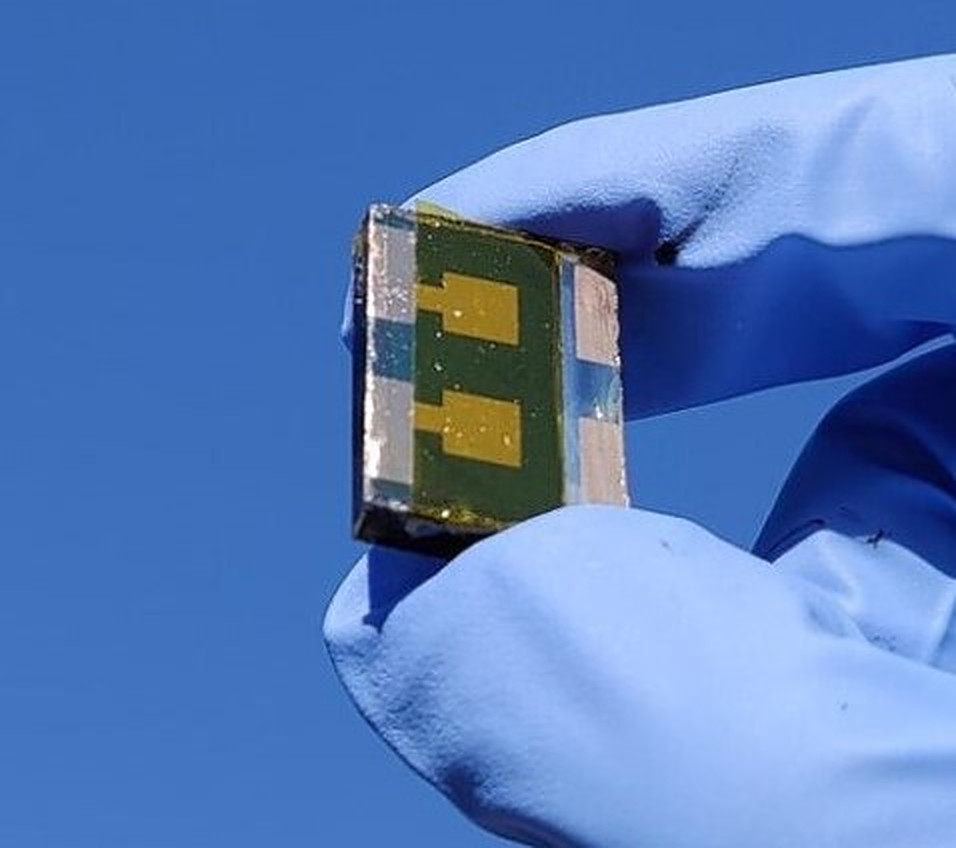A team of international researchers has demonstrated an inverted perovskite solar cell with a power-conversion efficiency of 25.3% and a quasi-steady-state efficiency of 24.8%.
Inverted perovskite cells have a device structure known as “p-i-n”, in which hole-selective contact p is at the bottom of intrinsic perovskite layer i with electron transport layer n at the top. Conventional halide perovskite cells have the same structure but reversed – a “n-i-p” layout. In n-i-p architecture, the solar cell is illuminated through the electron-transport layer (ETL) side; in the p-i-n structure, it is illuminated through the hole‐transport layer (HTL) surface.
The novelty of the research consists of a “co-adsorbent strategy that disassembles high-order clusters”, which the scientists said had the effect of homogenizing the distribution of phosphonic acid molecules to minimize the interfacial recombination.
“We studied about the agglomeration tendency of the current best phosphonic acid-based SAM through computational study, and we approach to mitigate these agglomeration phenomena. Partially we also used light management strategy to improve photocurrent,” Somin Park, the paper’s lead author, told pv magazine.
In the paper “Low-loss contacts on textured substrates for inverted perovskite solar cells,” published in nature, the group said it was able to effectively apply ultra-thin, so-called self-assembled monolayers (SAM), made of organic phosphonic acid molecules to the textured interface surfaces in an inverted perovskite cell architecture, with the texturing being optimized for light management.
Park added that the light management of the textured substrates combined with the uniform coating delivered the expected results, which the team was “very excited” to see.
Popular content
The encapsulated version of the device achieved 24.6% efficiency and retained 95% of its peak performance in accelerated aging tests at 65 C and 50% relative humidity for over 1,000 hours of maximum power point tracking under 1-sun illumination.
The technique could eventually be applied to other types of solar cells. “We anticipate that our insights into the adsorption mechanisms of molecules on textured substrates can be easily applied to other perovskite solar cell architectures, like multi-junction devices, advancing both efficiency and stability forward,” said Park.
The research, a result of a collaboration between the labs of Edward Sargent’s group at Northwestern University and Michael Grätzel at the , has reportedly produced “one of the most stable” perovskite solar cells with a high level of efficiency.
The researchers come from Northwestern University, the University of Kentucky and North Carolina State University in the United States, as well as Switzerland's École polytechnique fédérale de Lausanne (EPFL), the University of Toronto in Canada, and China's Peking University.
This content is protected by copyright and may not be reused. If you want to cooperate with us and would like to reuse some of our content, please contact: editors@pv-magazine.com.


1 comment
By submitting this form you agree to pv magazine using your data for the purposes of publishing your comment.
Your personal data will only be disclosed or otherwise transmitted to third parties for the purposes of spam filtering or if this is necessary for technical maintenance of the website. Any other transfer to third parties will not take place unless this is justified on the basis of applicable data protection regulations or if pv magazine is legally obliged to do so.
You may revoke this consent at any time with effect for the future, in which case your personal data will be deleted immediately. Otherwise, your data will be deleted if pv magazine has processed your request or the purpose of data storage is fulfilled.
Further information on data privacy can be found in our Data Protection Policy.